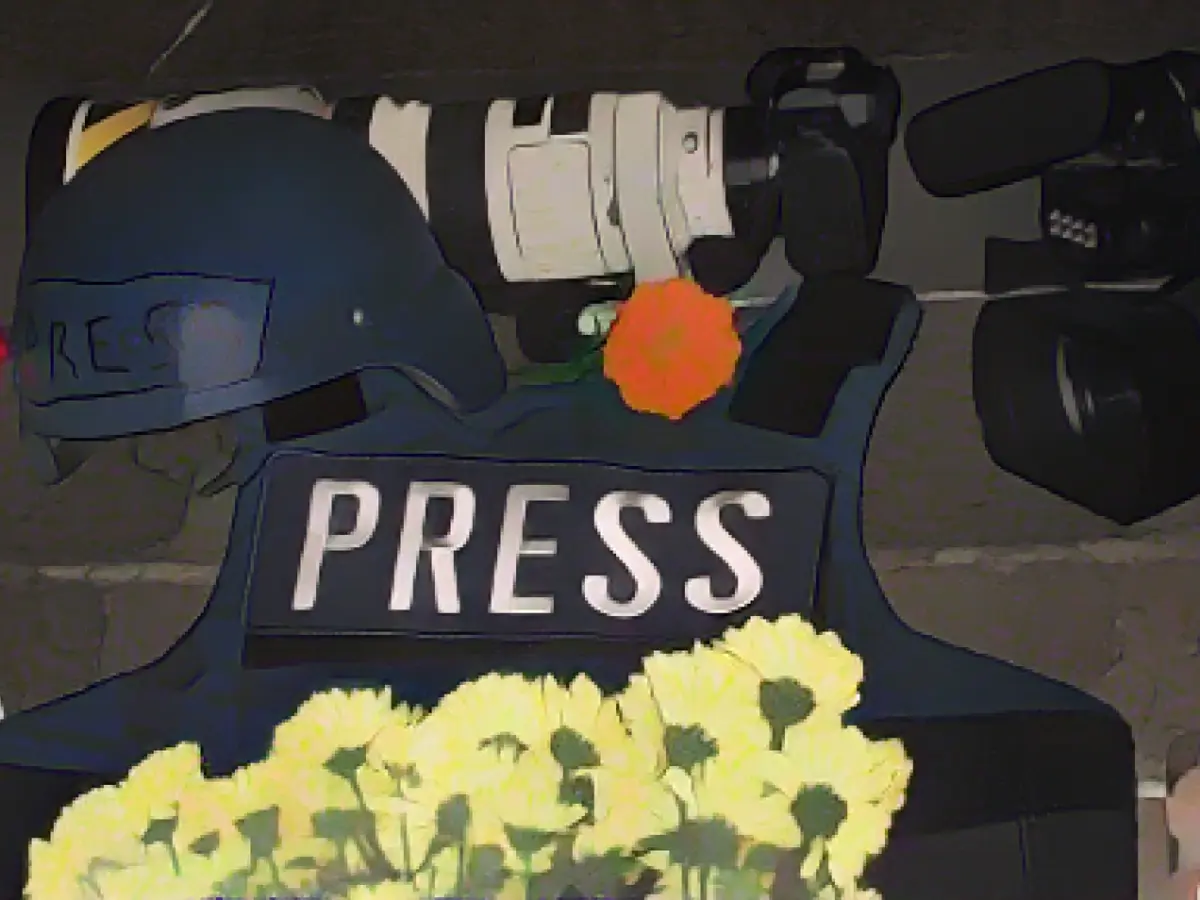Incident in mid-October - Journalists in Lebanon probably hit by Israeli tank shell
Seven journalists who came under fire in southern Lebanon in mid-October were probably hit by an Israeli tank shell, according to an investigation by the AFP news agency. For the investigation, which AFP published in Paris on Thursday, a fragment of ammunition, satellite images, witness statements and videos were also evaluated by experts. According to the investigation, the journalists were hit by a 120-millimeter tank shell, which is only used by the Israeli army in the region.
Reuters video reporter Issam Abdallah was killed in the shelling on October 13. Six other journalists were injured in a total of two explosions: AFP photographer Christina Assi and her video colleague Dylan Collins, two employees of the Al-Jazeera television station and two other Reuters journalists. Assi was seriously injured. She is still in hospital and had to have her right leg amputated.
The journalists had been on the border with Israel to report on the armed clashes in the border region following the brutal attack on Israel by the radical Islamic group Hamas on October 7. The group was met near the border village of Alma al-Shaab, where clashes took place almost daily.
Experts certain: ammunition from Israeli forces
AFP worked with the British non-governmental organization Airwars, which investigates attacks on civilians in armed conflicts, to investigate the attack. Immediately after the attack, a large fragment of ammunition was filmed near Abdallah's body. The day after, a local resident, who does not wish to be named, collected the fragment and took photos at the site of the attack. AFP and Airwars had this analyzed by six weapons experts, including former British Army officers and investigators with experience in conflict zones.
All experts agree that the ammunition fragment came from a 120-millimeter tank projectile used in Israeli Merkava tanks. It was apparently fired near the Israeli village of Jordeikh. There was no fighting in the region at the time. All seven journalists were wearing helmets and bulletproof vests labeled "Press" and were standing on a hill behind cameras mounted on tripods that were clearly visible.
"The attacks came out of nowhere"
The first attack hit the journalists at 6.02 pm. The 37-year-old Abdallah was killed instantly, the 28-year-old Assi was seriously injured. Her screams can be heard on video recordings: "What happened? What has happened? I can't feel my legs." Her AFP colleague Collins later reported that the group was "suddenly" hit after about an hour of shooting on the hill. "The attacks came out of nowhere."
Assi said the group had positioned themselves in an "exposed" position and a "safe distance from the front". "Suddenly everything went white," she recalled of the moment of the attack. "I lost feeling in my legs and started screaming for help." As Collins tried to give his colleague first aid, there was a second explosion that hit an Al-Jazeera car. Collins was also injured.
According to the research, the two attacks took place 37 seconds apart and the projectiles hit a few meters apart. Experts therefore rule out the possibility that it was an accidental attack. As can be seen on satellite images, Israeli tanks were deployed near Jordeikh at the time of the attack. It is not possible to say exactly which tank fired the shells. AFP was also unable to determine which unit they belonged to and who gave the order for the attacks.
Israeli army does not comment
Investigations by the human rights organizations Human Rights Watch (HRW) and Amnesty International confirmed AFP's findings. According to HRW, the attacks were apparently "deliberate attacks on civilians", which could be considered a "war crime". International humanitarian law prohibits direct attacks on civilians.
Amnesty also stated that the incident was "likely a direct attack on civilians that must be investigated as a war crime". "The Israeli military knew or should have known that the seven people were journalists," said Amnesty's deputy regional director for the Middle East, Aya Majzoub. "And yet they were targeted not once, but twice."
The Israeli army did not initially respond to a request from AFP for comment on the research. After the attack, a military spokesman said that the army deeply regretted the journalist's death and would investigate the incident.
AFP information director Phil Chetwynd said AFP had already "made it very clear" that all possible legal means would be used "to ensure that justice is done for Christina and Issam". According to the Committee to Protect Journalists (CPJ), at least 63 journalists and employees of media companies have been killed since the beginning of the Gaza war.
Read also:
- Year of climate records: extreme is the new normal
- Precautionary arrests show Islamist terror threat
- Numerous oil, gas and coal lobbyists at climate conference
- COP28: Emirates announce fund for climate projects
The journalists were reporting on the armed clashes between Israel and Hamas in the border region of South Lebanon, specifically near the village of Alma al-Shaab where clashes occurred almost daily. The investigation by AFP and Airwars found that the ammunition fragment collected at the site of the attack was from a 120-millimeter tank projectile used in Israeli Merkava tanks, suggesting that it was fired from the Israeli village of Jordeikh.
Source: www.stern.de








